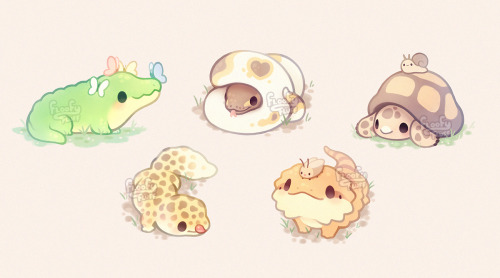This Is The 2021 Pink Supermoon!🌜🌷🌸🌹🌺🌼💐💮




This is the 2021 Pink Supermoon!🌜🌷🌸🌹🌺🌼💐💮
Although this moon is not pink, the name “Pink Moon” is named after the pink phlox flower that appears in the spring during the time of this event. This rare celestial event won’t happen again for another 8 years so be sure to check it out! ✨✨✨
Taken by me (Michelle Park) using the Slooh telescopes on April 26th, 2021.
More Posts from Mystarypi and Others

This is the Tarantula Nebula! 🌈🌈🌈
For some reason, this photo really highlighted the red and blue colors of this nebula - making it look a lot more colorful. This huge star-forming region is located in our satellite galaxy, the Large Magellanic Cloud, and has hot gas up to a million degrees in temperature that shape this nebula! ✨✨✨
Taken by me (Michelle Park) using the Slooh Canary Two telescope on December 23rd, 2020 at 2:57 UTC.

This is the Trifid Nebula! 💞💞💞
This nebula’s unique name comes from the 3 dark bands of dust that traverse its center. Despite the nebula itself holding many massive stars, it is no longer undergoing star formation because these highly radiative stars have blown a lot of the dust away! 💫💫💫
Taken by me (Michelle Park) using the Slooh Canary Two telescope on February 5th, 2022 at 8:37 UTC.

It’s reptile hours


IC 1396, Open Star Cluster

This is the Waxing Gibbous Moon! 🌔🌔🌔
Yesterday, October 16th, was International Observe the Moon Night, which meant that Slooh’s telescopes were pointed at the beautiful Moon! Check out more resources to celebrate this exciting day here: https://www.space.com/international-observe-the-moon-night-2021 🤩🤩🤩
Taken by me (Michelle Park) using the Slooh Canary One telescope on October 16th, 2021 at 23:32 UTC.

tom ato bird









It’s Monday!
Collection of the 2019 inspirational eevee series.




My Top Posts in 2021
#5

This is the Skull Nebula! 💀💀💀
The glow of this eerie nebula is perfect for Halloween! This planetary nebula has a binary star system with a third star orbiting it. The beautiful colors of this nebula come from the outer layers of a Sun-like star that died in an explosion! 👻👻👻
Taken by me (Michelle Park) using the Slooh Canary Three telescope on October 28th, 2021 at 1:57 UTC.
423 notes • Posted 2021-10-28 17:26:10 GMT
#4

This is the Crescent Nebula! 🌙🌙🌙
Happy Valentine’s Day! To celebrate, here is a ❤red❤ emission nebula: its color is created by energized hydrogen. This nebula was formed by a young Wolf-Rayet star blowing stellar wind and when the star became a red giant, it energized the wind! 💫💫💫
Taken by me (Michelle Park) on February 14th, 2021 at 6:51 UTC using the Slooh Canary Two telescope.
438 notes • Posted 2021-02-14 15:04:10 GMT
#3

This is Haley’s Coronet! 👑👑👑
The interaction between the larger spiral galaxy and its dwarf galaxy have created plumes of dust around the duo. The process of the larger galaxy eating the smaller one is actually called galactic cannibalism (spooky)! 👻👻👻
Taken by me (Michelle Park) using the Slooh Chile Two telescope on January 13th, 2021 at 3:18 UTC.
521 notes • Posted 2021-01-16 13:40:35 GMT
#2

This is the Cat’s Paw Nebula! 🐾🐾🐾
This nebula is glowing due to the interactions between its hot stars and large molecules known as polycyclic aromatic hydrocarbons. This makes it particularly bright in the infrared and a common target for astrophotography in the Milky Way galaxy! 🔭🔭🔭
Taken by me (Michelle Park) using the Slooh Chile Two telescope on March 7th, 2021 at 6:38 UTC.
533 notes • Posted 2021-03-08 13:07:09 GMT
#1

This is Vega! ✨✨✨
This is the brightest star in the summer constellation Lyra and the 5th brightest star in the night sky. Infrared observations have confirmed a circumstellar disk of dust around this star, similar to the Kuiper Belt around the solar system! 🌃🌃🌃
Taken by me (Michelle Park) using the Slooh Canary Two telescope on July 5th, 2021 at 22:26 UTC.
580 notes • Posted 2021-07-06 12:57:23 GMT
Get your Tumblr 2021 Year in Review →
🤩✨💖 THANK YOU ALL FOR YOUR SUPPORT! 💖✨🤩
-
 rawsober reblogged this · 3 years ago
rawsober reblogged this · 3 years ago -
 rawsober liked this · 3 years ago
rawsober liked this · 3 years ago -
 cyberpunkessence2 liked this · 3 years ago
cyberpunkessence2 liked this · 3 years ago -
 liloneszzs liked this · 3 years ago
liloneszzs liked this · 3 years ago -
 tpl10209777 liked this · 3 years ago
tpl10209777 liked this · 3 years ago -
 tbhklove liked this · 3 years ago
tbhklove liked this · 3 years ago -
 unicornsxd liked this · 3 years ago
unicornsxd liked this · 3 years ago -
 f0malhaut liked this · 3 years ago
f0malhaut liked this · 3 years ago -
 positivitywithinme liked this · 3 years ago
positivitywithinme liked this · 3 years ago -
 twilightmorn liked this · 3 years ago
twilightmorn liked this · 3 years ago -
 eltitiverde liked this · 3 years ago
eltitiverde liked this · 3 years ago -
 briefcreatorpeanutknight liked this · 3 years ago
briefcreatorpeanutknight liked this · 3 years ago -
 nonimoon liked this · 3 years ago
nonimoon liked this · 3 years ago -
 blackcat2016 reblogged this · 3 years ago
blackcat2016 reblogged this · 3 years ago -
 blackcat2016 liked this · 3 years ago
blackcat2016 liked this · 3 years ago -
 infinitelytheheartexpands liked this · 3 years ago
infinitelytheheartexpands liked this · 3 years ago -
 rayatii liked this · 3 years ago
rayatii liked this · 3 years ago -
 nox-ceur liked this · 3 years ago
nox-ceur liked this · 3 years ago -
 smile-at-the-stars reblogged this · 3 years ago
smile-at-the-stars reblogged this · 3 years ago -
 russian-funeral liked this · 3 years ago
russian-funeral liked this · 3 years ago -
 ninjavogato reblogged this · 3 years ago
ninjavogato reblogged this · 3 years ago -
 ninjavogato liked this · 3 years ago
ninjavogato liked this · 3 years ago -
 anjo-by-the-sea liked this · 3 years ago
anjo-by-the-sea liked this · 3 years ago -
 dopesoulcookiegoth liked this · 3 years ago
dopesoulcookiegoth liked this · 3 years ago -
 heyheycallmeheyhey liked this · 3 years ago
heyheycallmeheyhey liked this · 3 years ago -
 starblood reblogged this · 3 years ago
starblood reblogged this · 3 years ago -
 alma-lusa liked this · 3 years ago
alma-lusa liked this · 3 years ago -
 refnhazs liked this · 3 years ago
refnhazs liked this · 3 years ago -
 androgynousfoxcoffee liked this · 3 years ago
androgynousfoxcoffee liked this · 3 years ago -
 quartise reblogged this · 3 years ago
quartise reblogged this · 3 years ago -
 quartise liked this · 3 years ago
quartise liked this · 3 years ago -
 kalthemal liked this · 3 years ago
kalthemal liked this · 3 years ago -
 raindrops-in-my-coffee liked this · 3 years ago
raindrops-in-my-coffee liked this · 3 years ago -
 chocolatesweetsdetective liked this · 3 years ago
chocolatesweetsdetective liked this · 3 years ago -
 randomlythinkingaboutflamingos reblogged this · 3 years ago
randomlythinkingaboutflamingos reblogged this · 3 years ago -
 aph-closetedwords liked this · 3 years ago
aph-closetedwords liked this · 3 years ago -
 xvaynesux liked this · 3 years ago
xvaynesux liked this · 3 years ago -
 paraluman28 liked this · 3 years ago
paraluman28 liked this · 3 years ago -
 spacedreamerinatimemachine liked this · 3 years ago
spacedreamerinatimemachine liked this · 3 years ago
